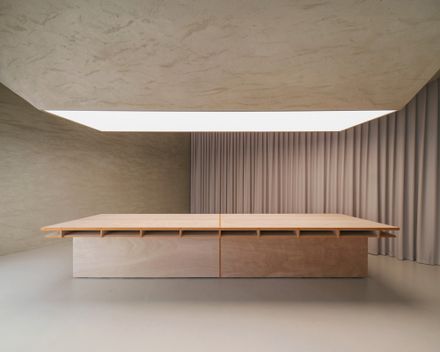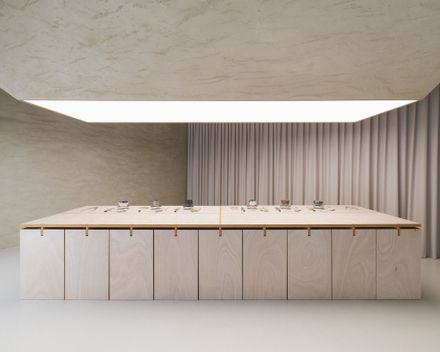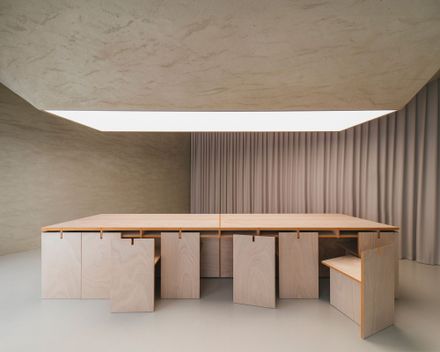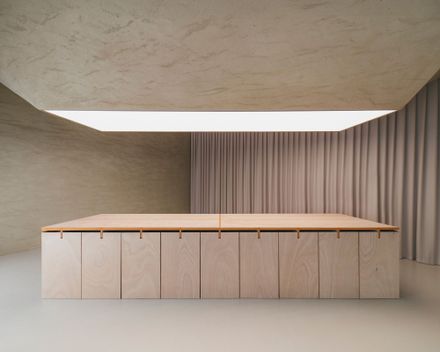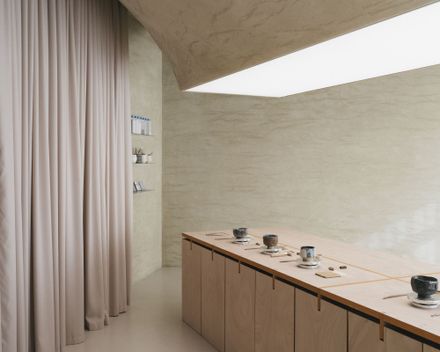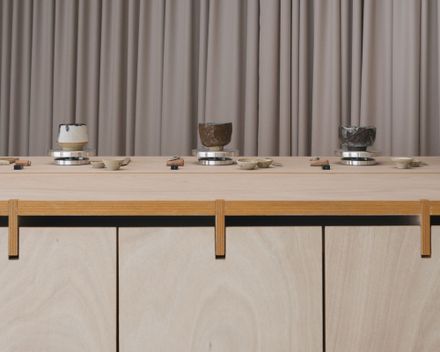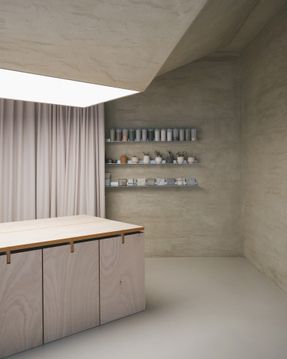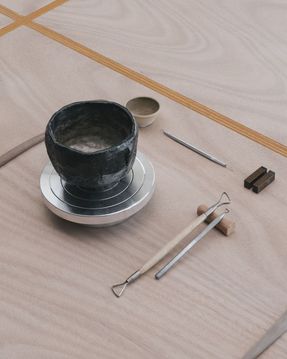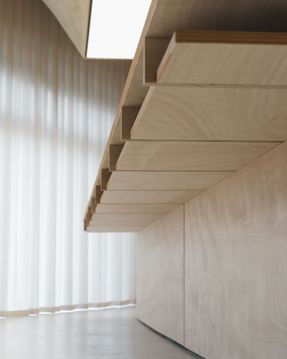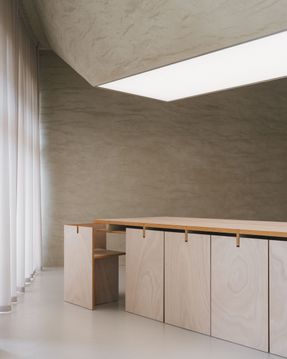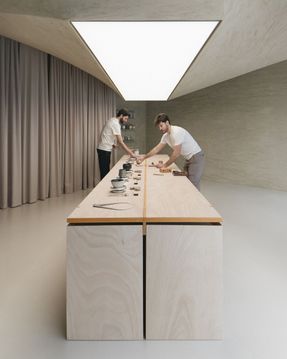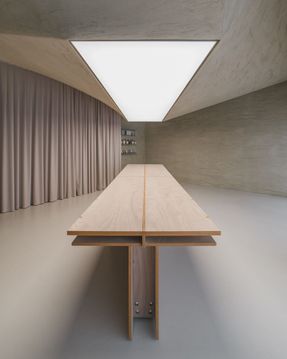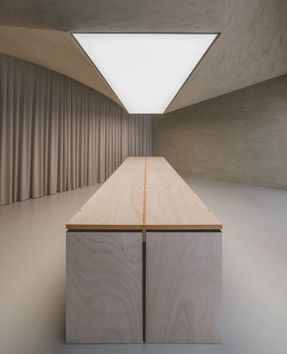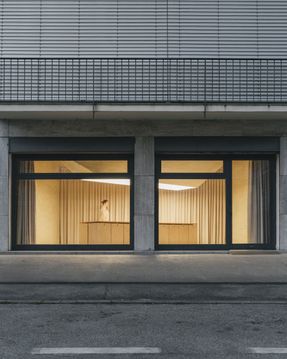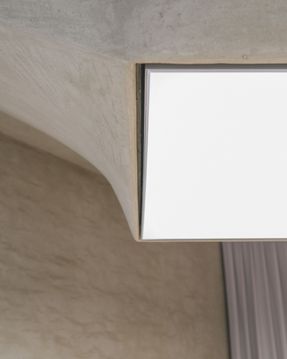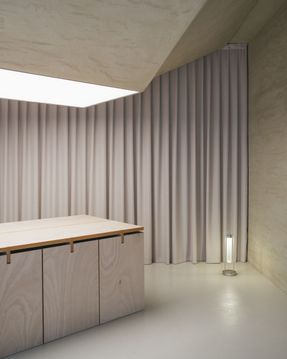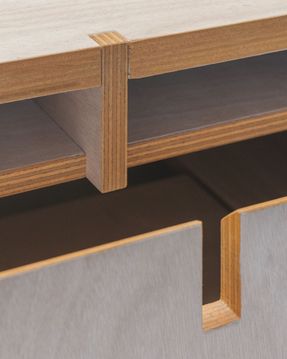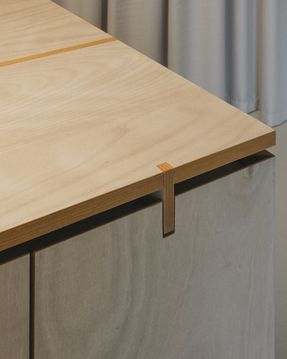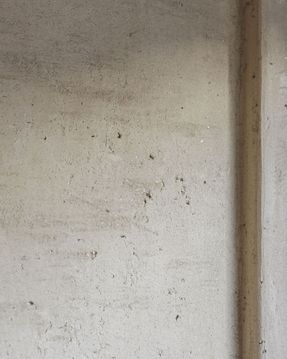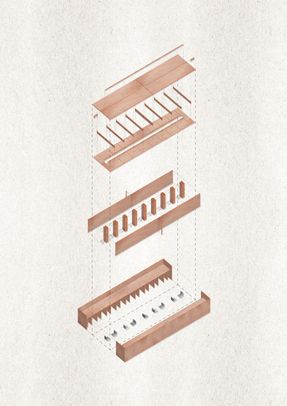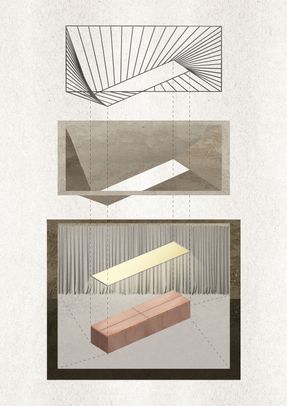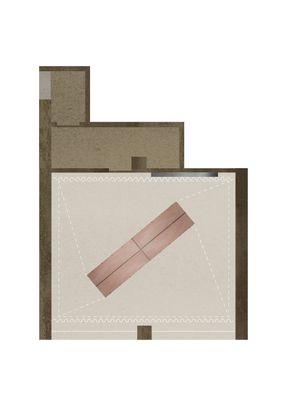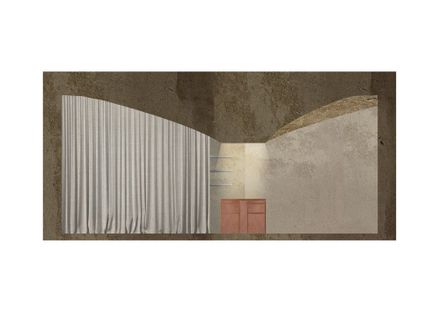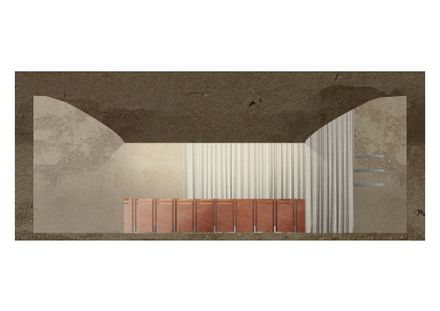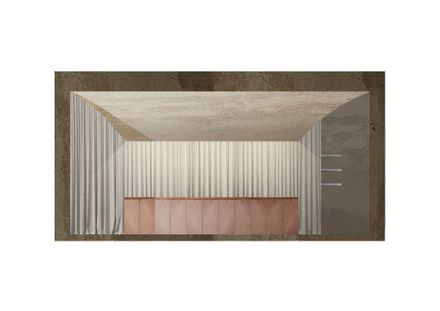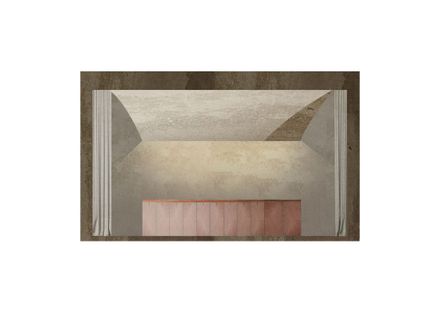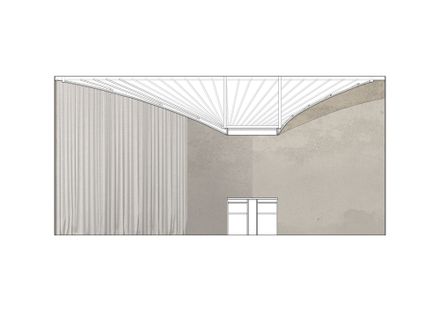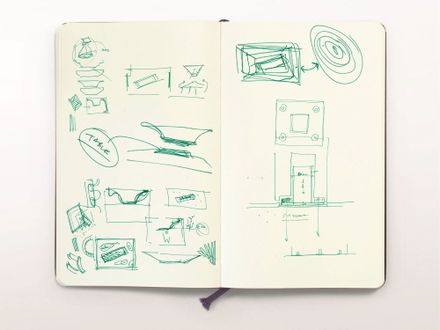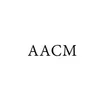
Mosca Bianca Ceramic Workshop
CLIENT
Mosca Bianca Ceramics
PROJECT TEAM
Nicolò Chinello, Rodolfo Morandi
MANUFACTURERS
Bottega Dell’arte, Maripav Italia, Stealth Light, Terraformae, Viabizzuno
PHOTOGRAPHS
Catalogo
AREA
50 M²
YEAR
2025
LOCATION
Padua, Italy
CATEGORY
Cowork Interiors
Text description provided by architect.
Mosca.Bianca is a workshop designed as an exhibition space. A ceramic workshop where a single sculptural gesture portrays the entire process of terracotta crafting.
The form is shaped like clay on the potter's wheel, molded twisting from the ceiling. The space is tensed by the centripetal force of the design gesture, concentrating the atmosphere around a single zenithal light.
Like a sacral element, perfectly aligning with the lamp that pierces the stereotomic shape above, a seemingly monolithic exhibit altar diagonally stands out in the space.
Upon closer observation, the monolith declares itself autonomous, as an antithesis to the surrounding stereotomic space, a tectonic and lightweight piece of furniture. As soon as the sides open, revealing a series of working chairs, a nature of interlocking and overlapping is exhibited.
Stripped of the seatings, the table presents itself as an architecture within architecture, a slender top of okumé sheets almost suspended in the air, supported by a series of T-frames, like cantilevered beams that defy gravity.
If the top surface material responds to practical needs for dough workability, the texture of the walls and ceiling is symbolic.
The rammed-earth plaster, composed of clay and brick production waste, represents the cyclical nature of terracotta's life, looking at continuous reuse and recovery.
However, not every function is stated. To maintain narrative coherence, the modeling tools are concealed on metal blades, hidden by curtains as in a scenic stage backdrop, revealed just as needed during workshop activities.
The Mosca.Bianca space thus narrates the artisanal process of working with clay.
Originally raw as the plaster, then shaped and worked as the roof centripetal form and finally displayed on the wall or on the exhibition altar, illuminated by the imposing zenithal light.


